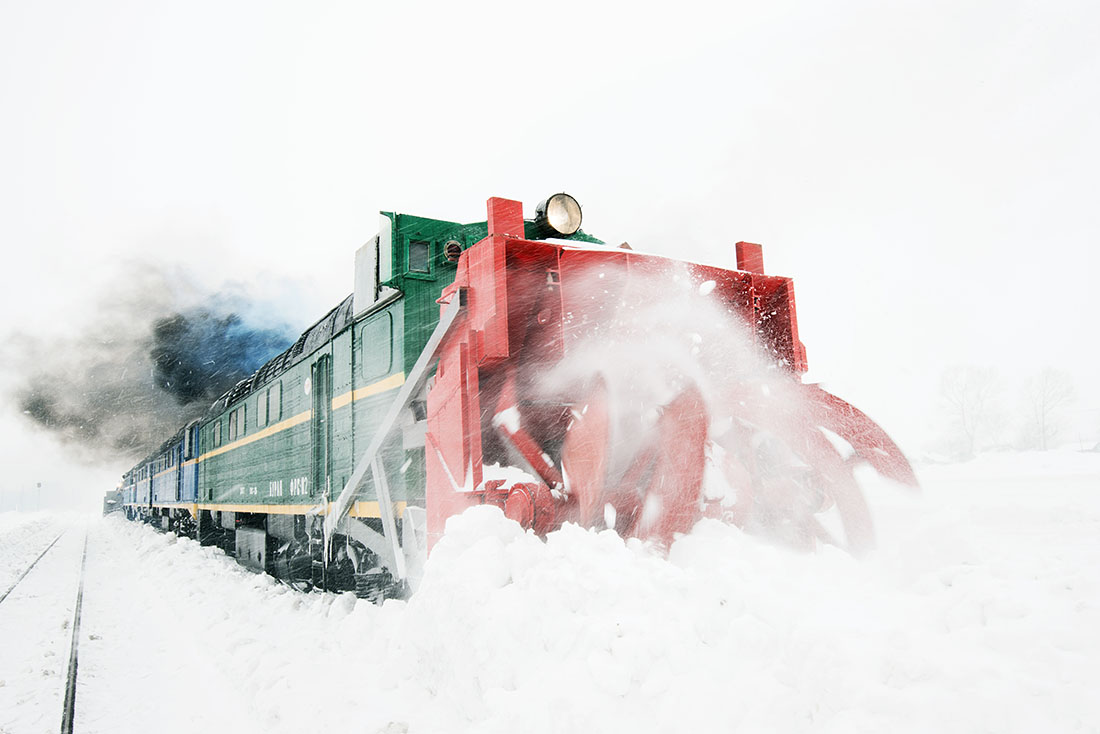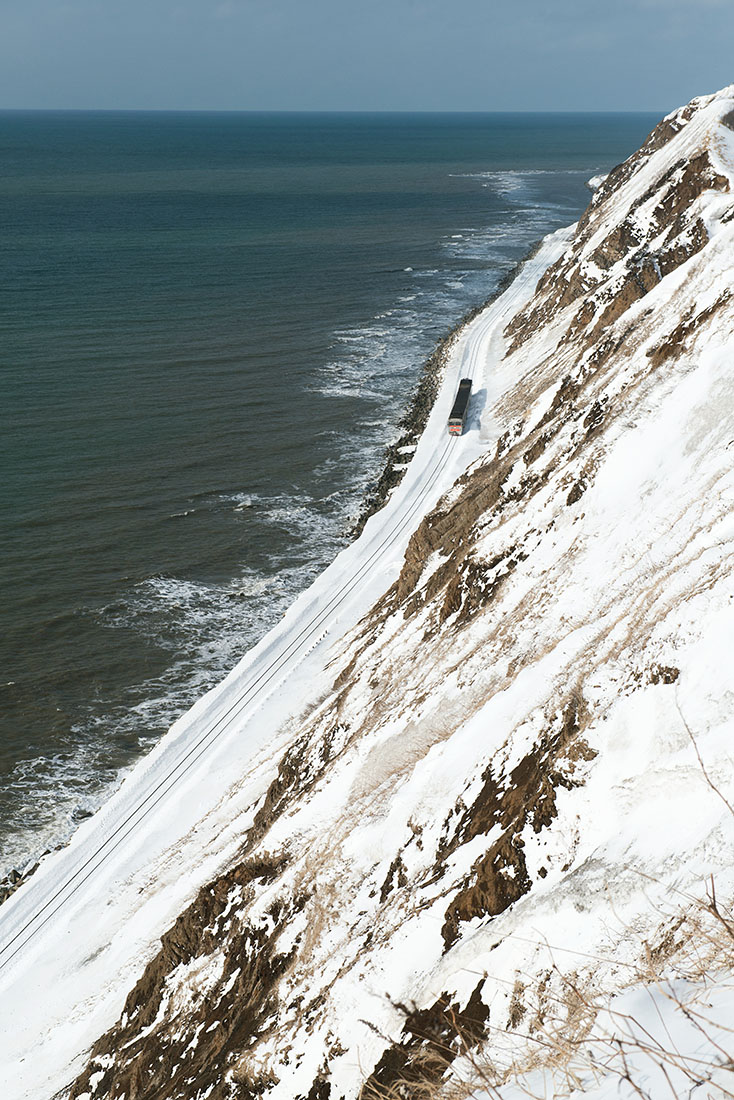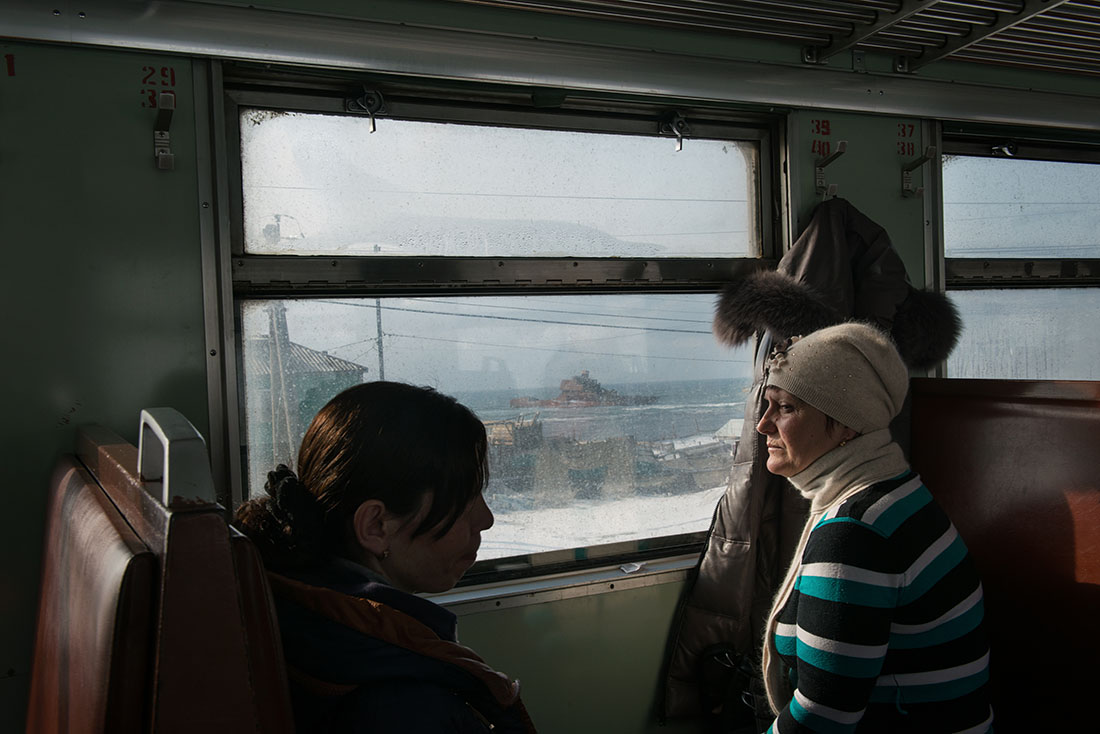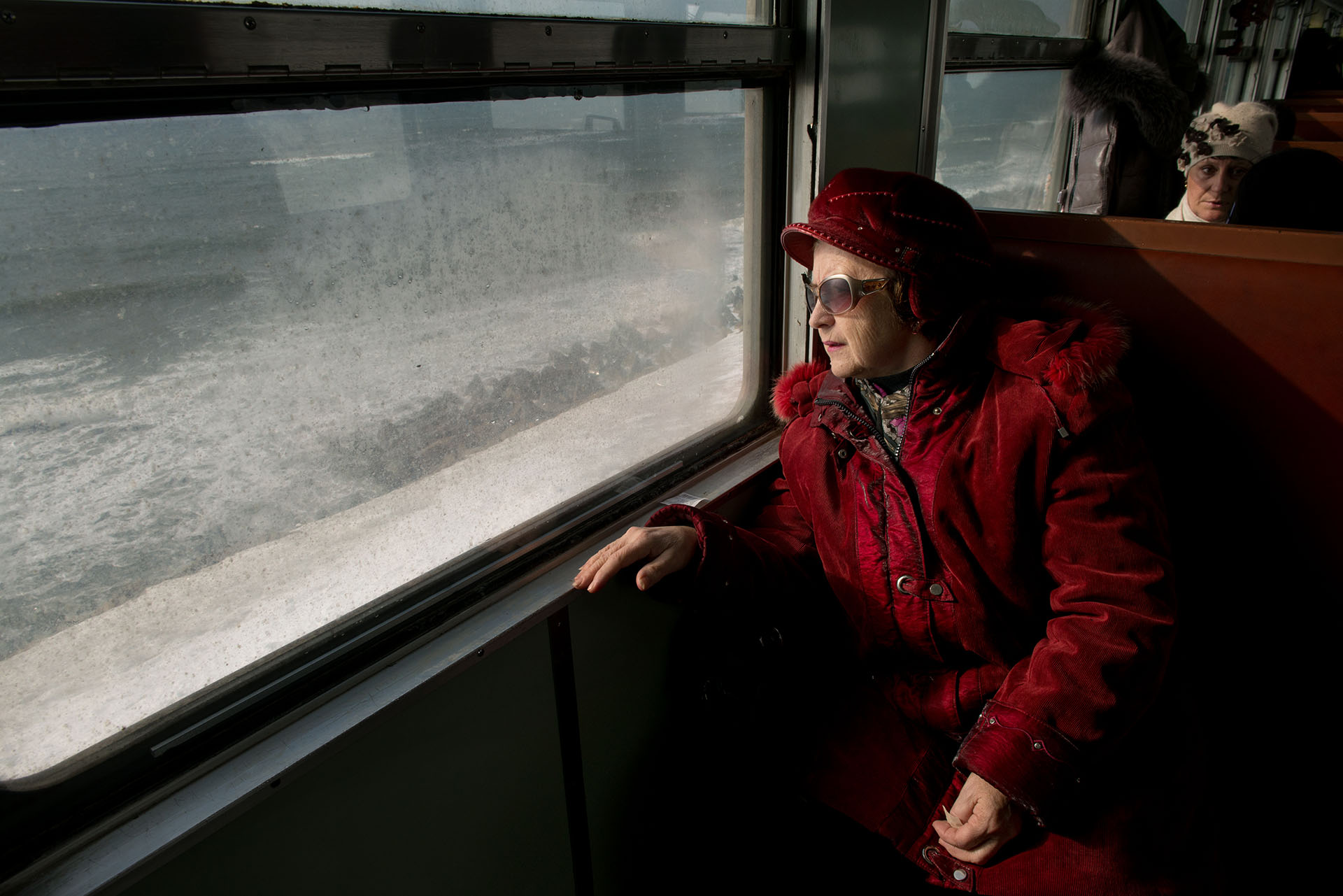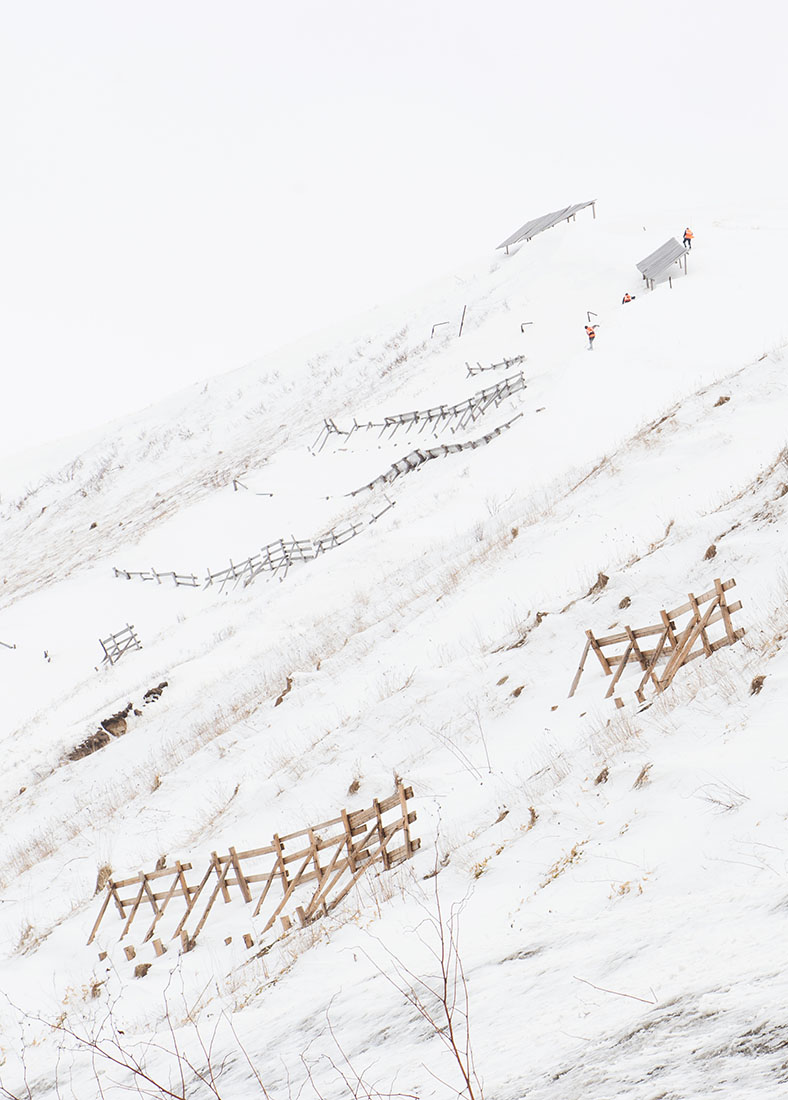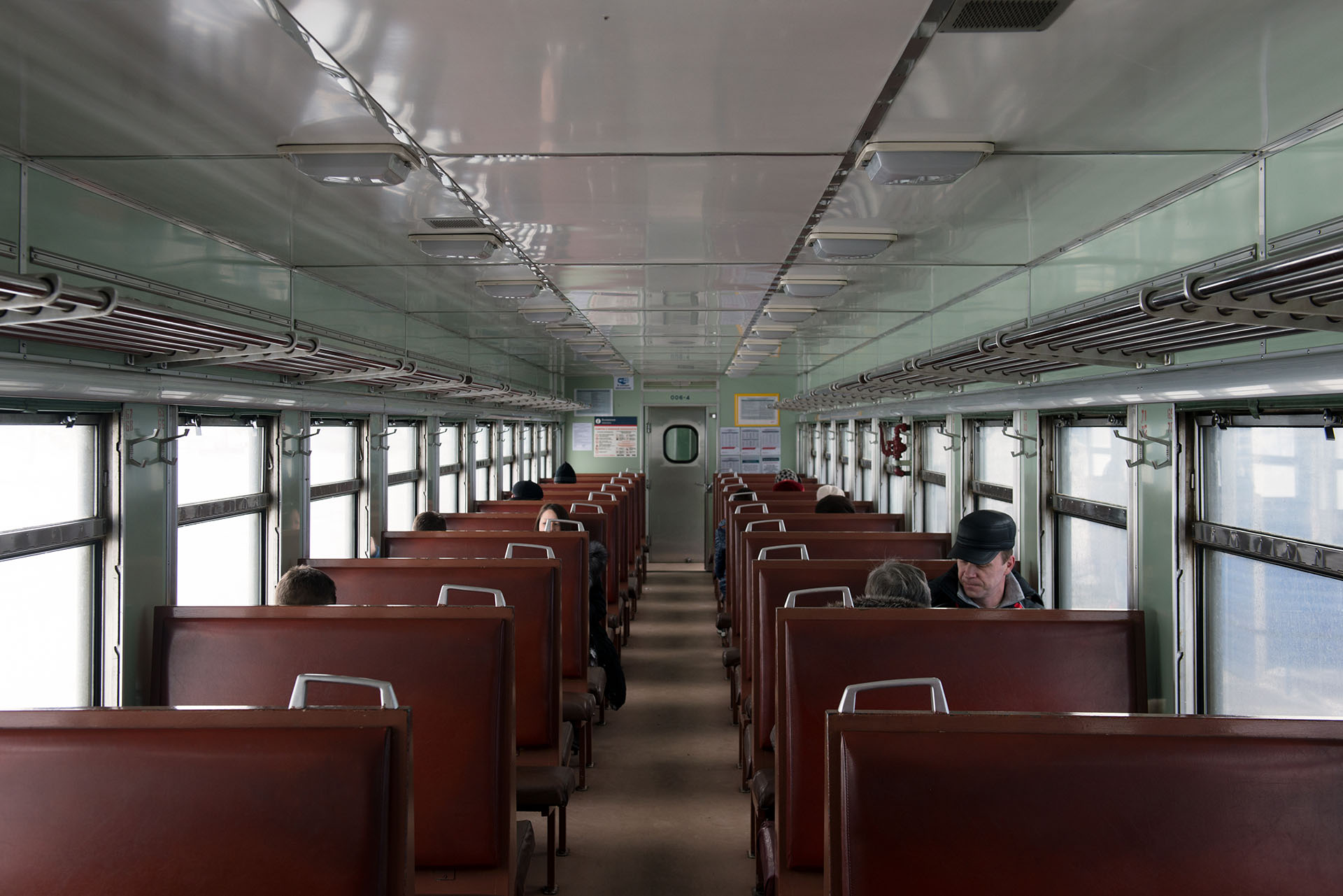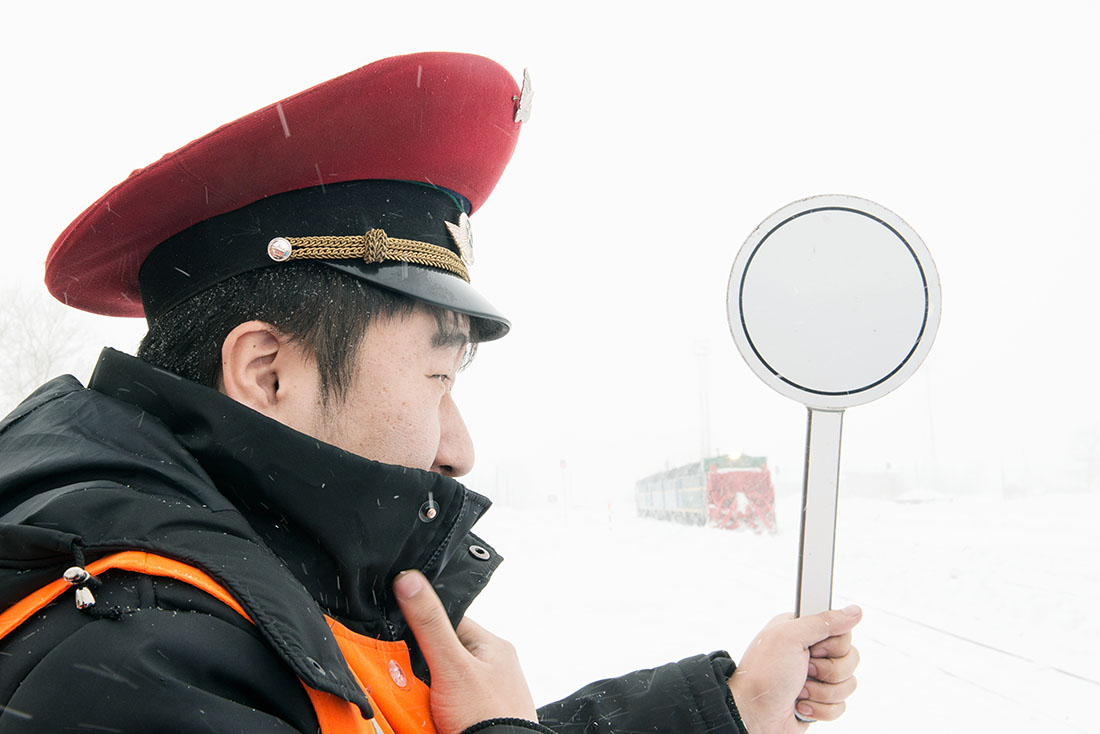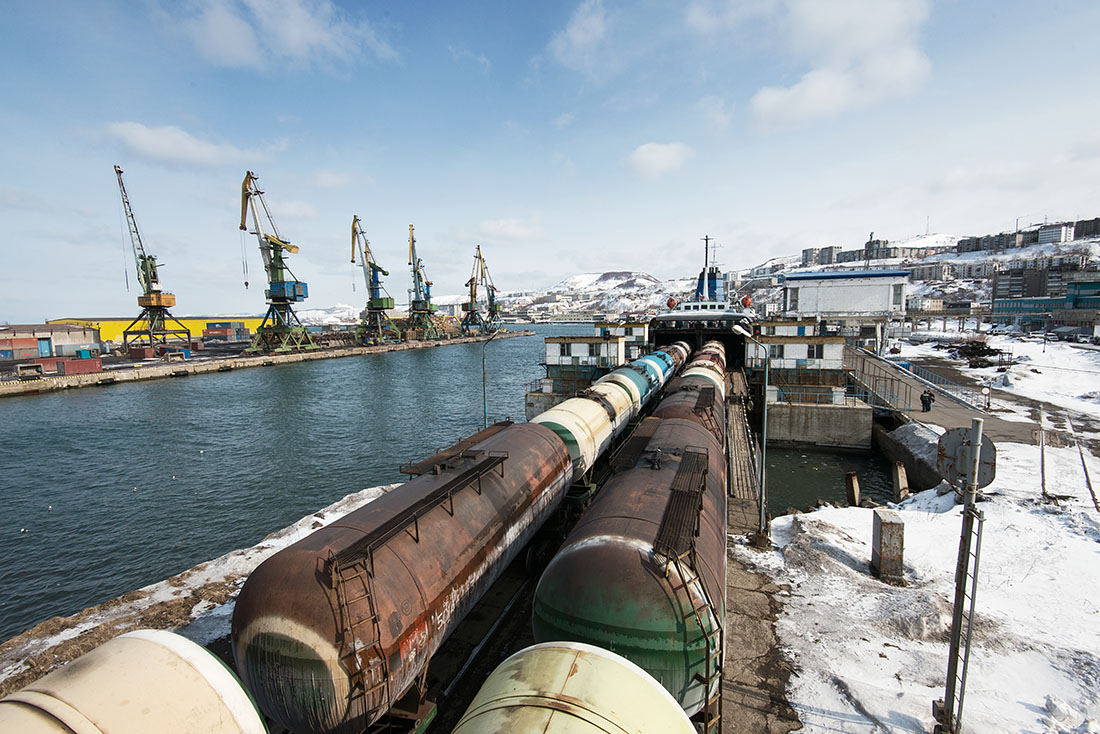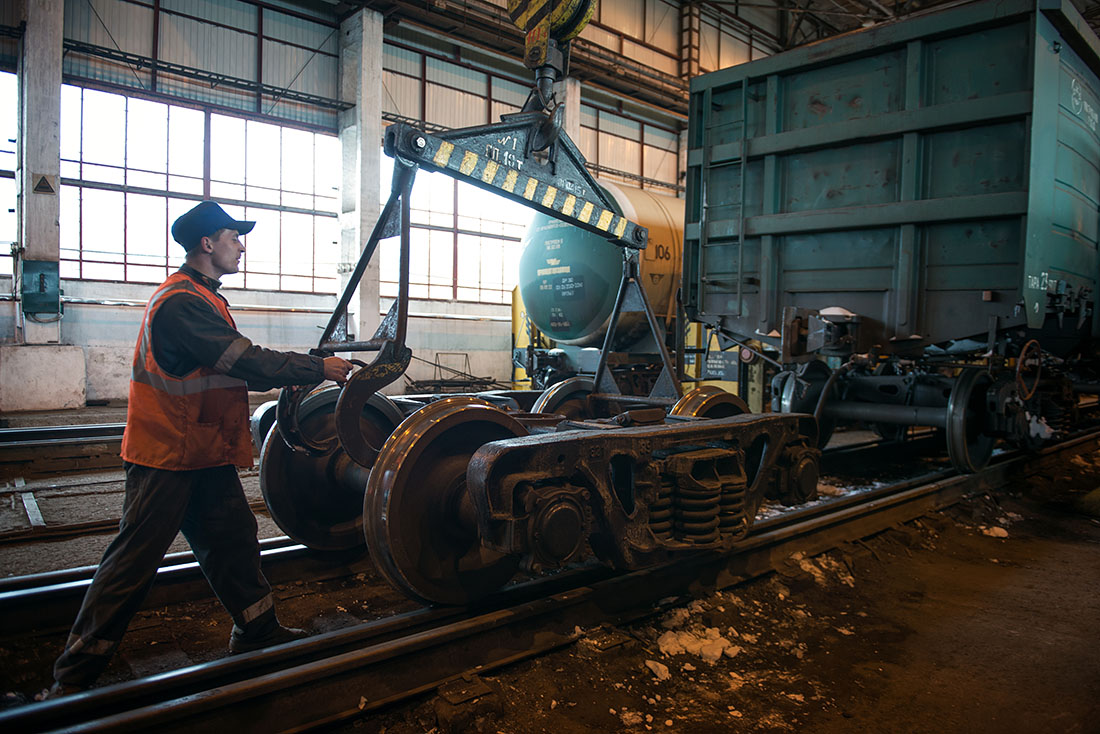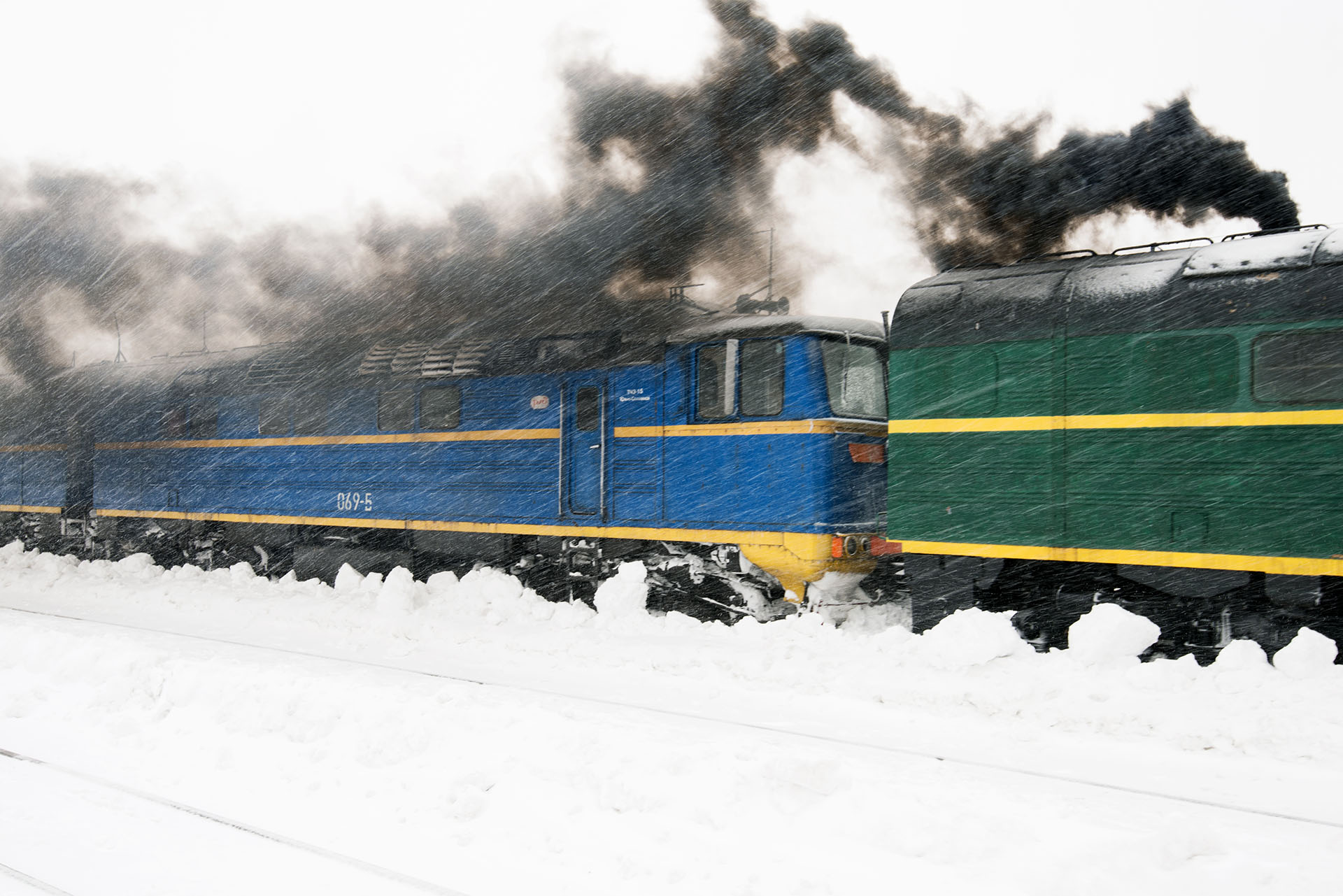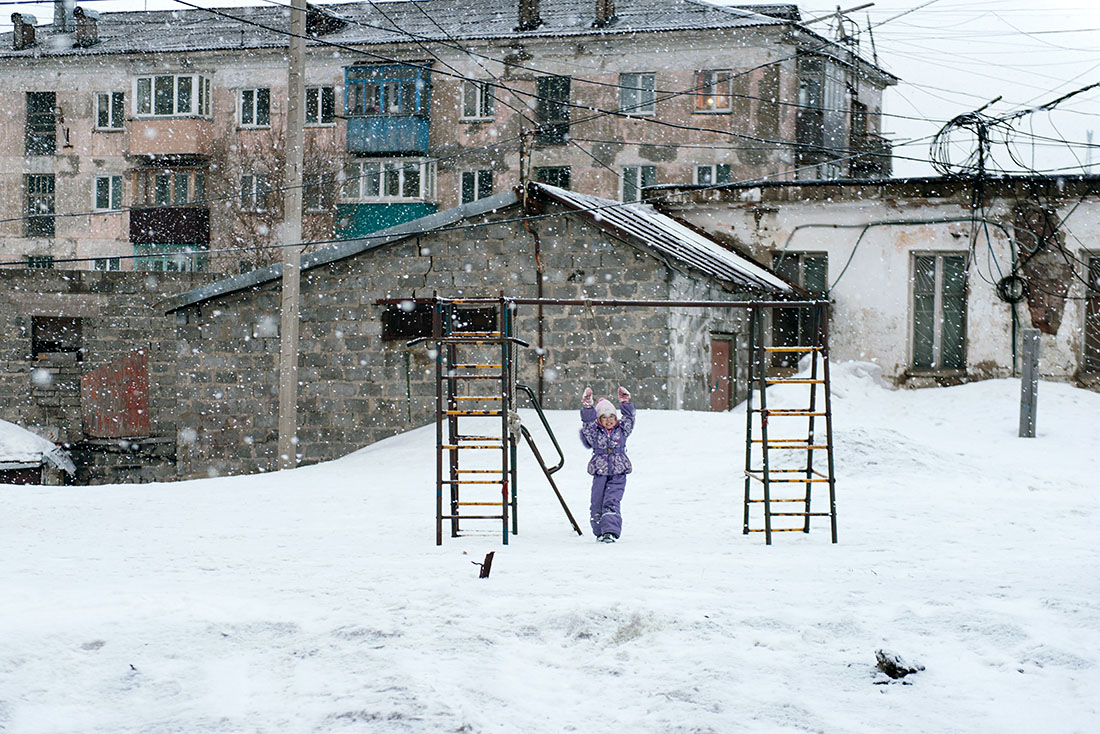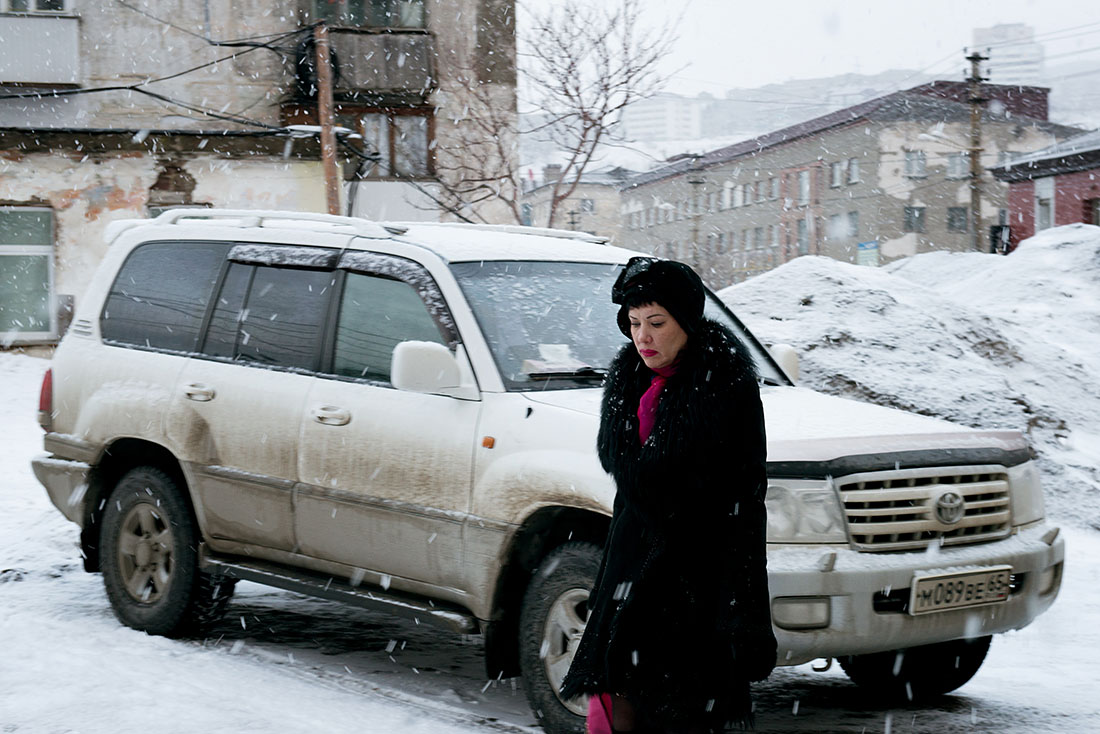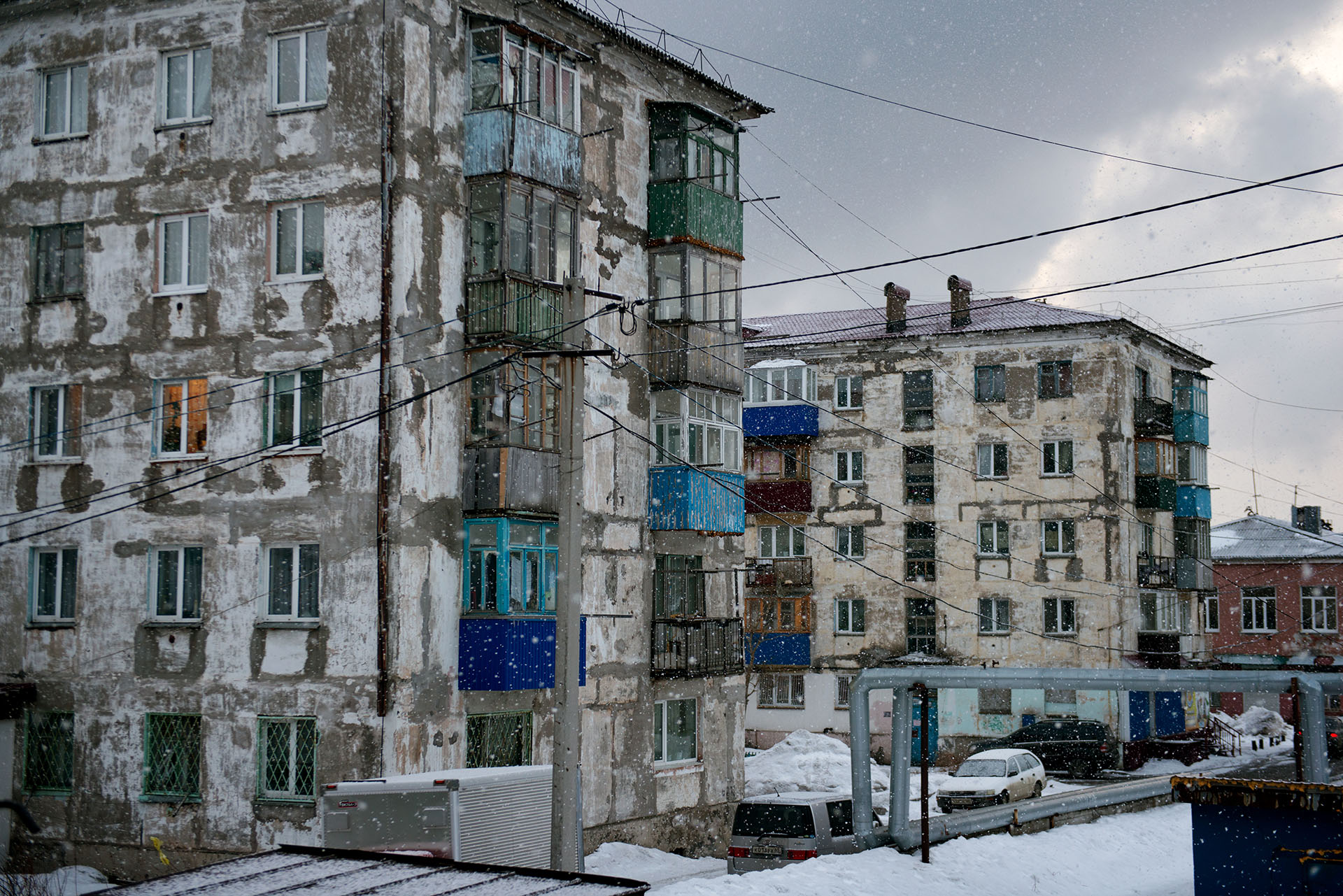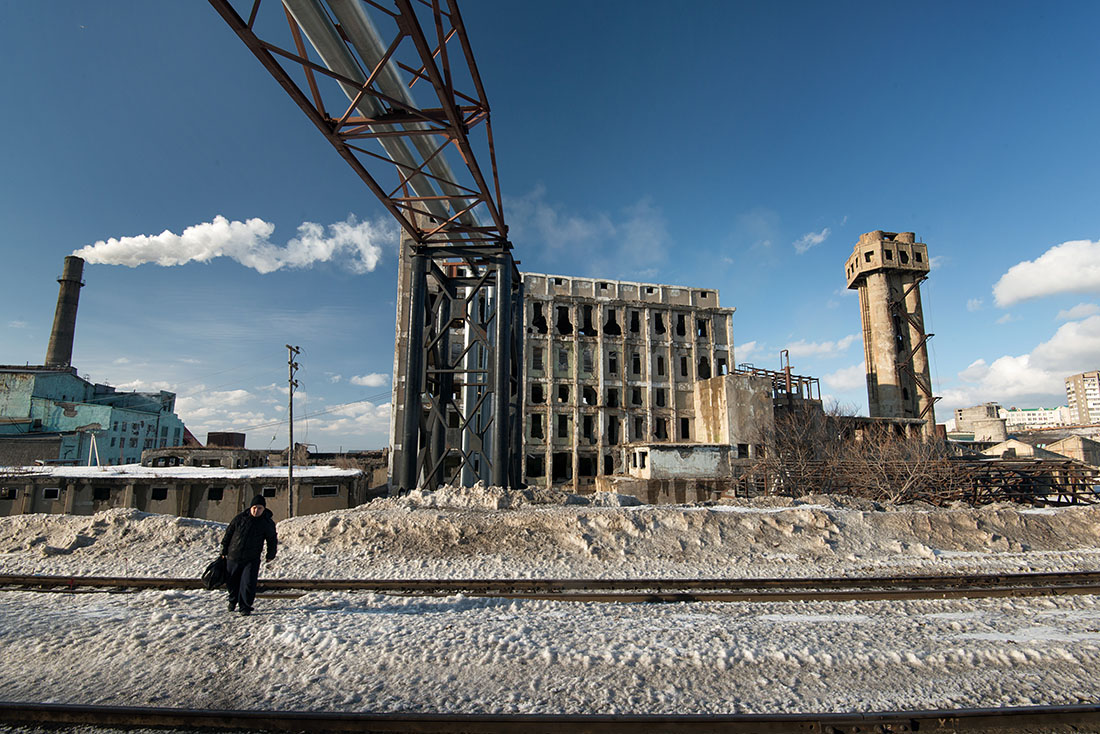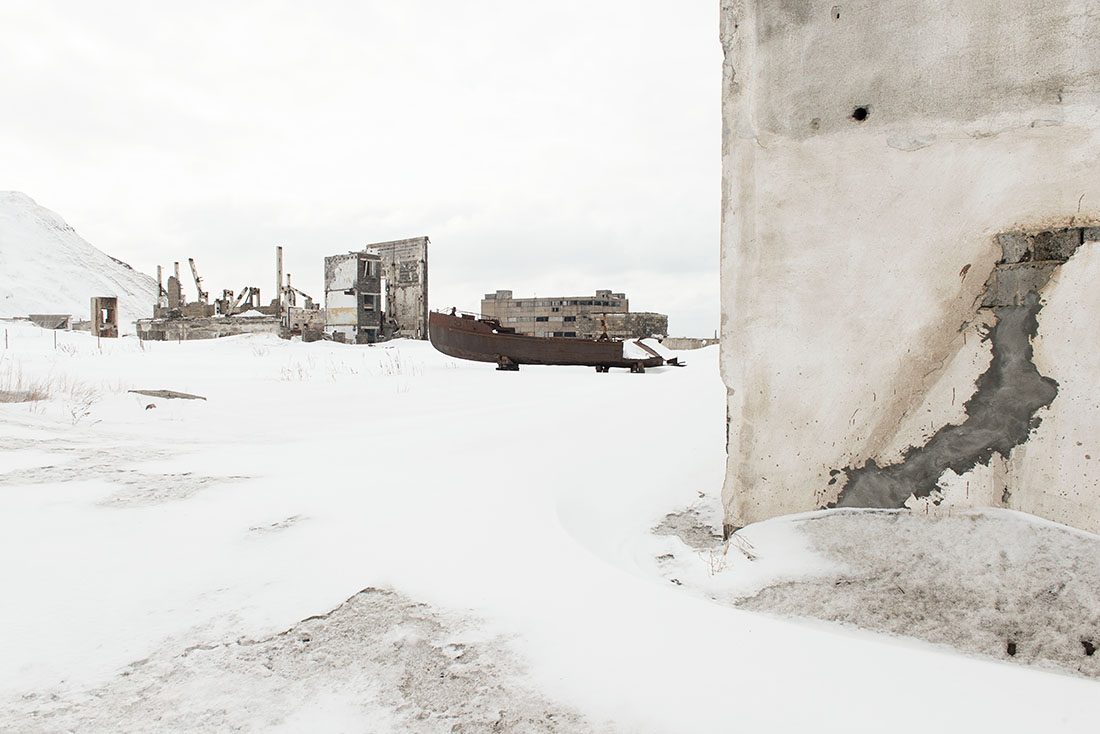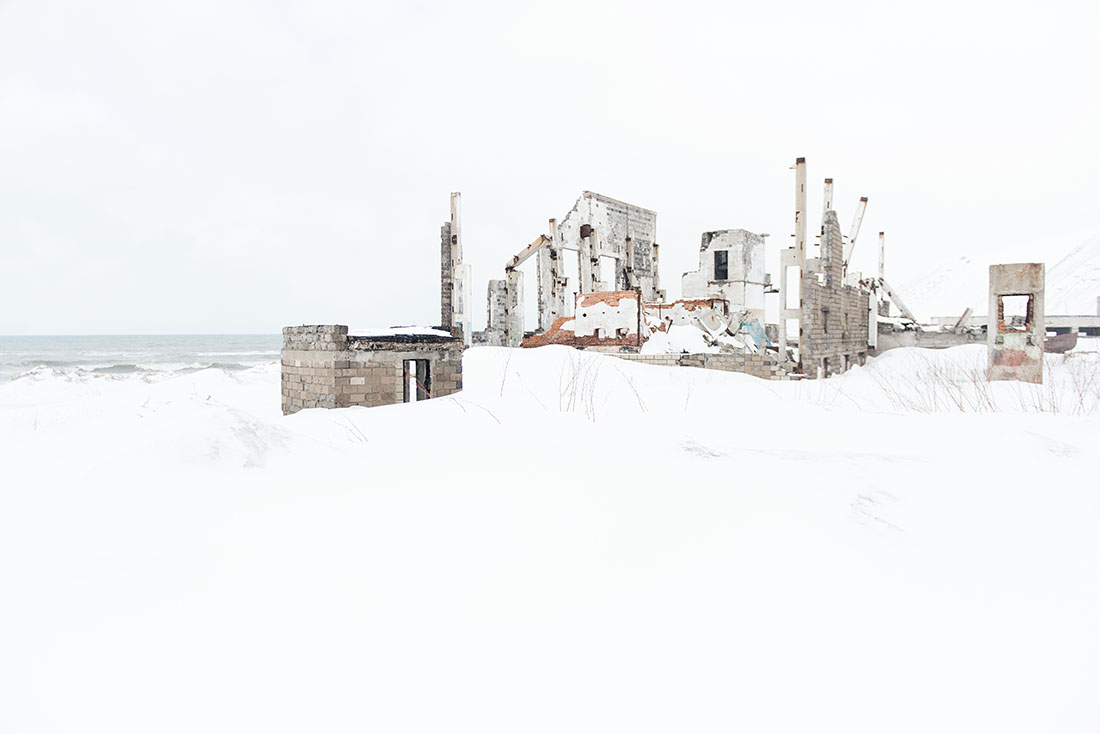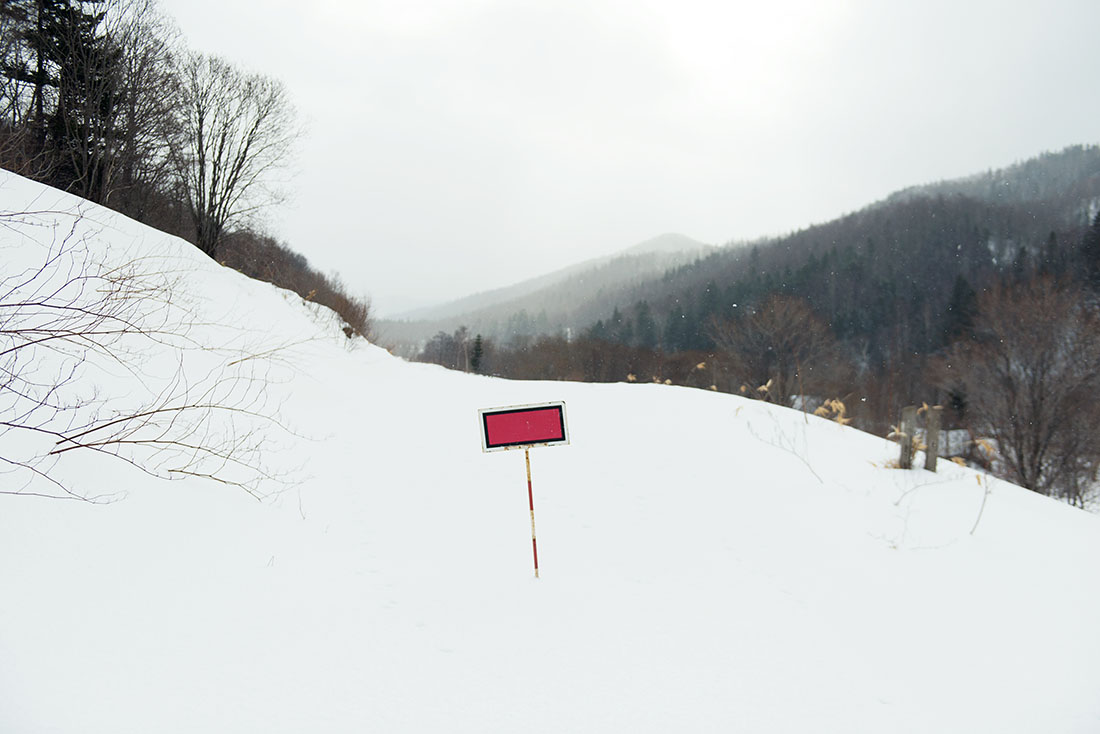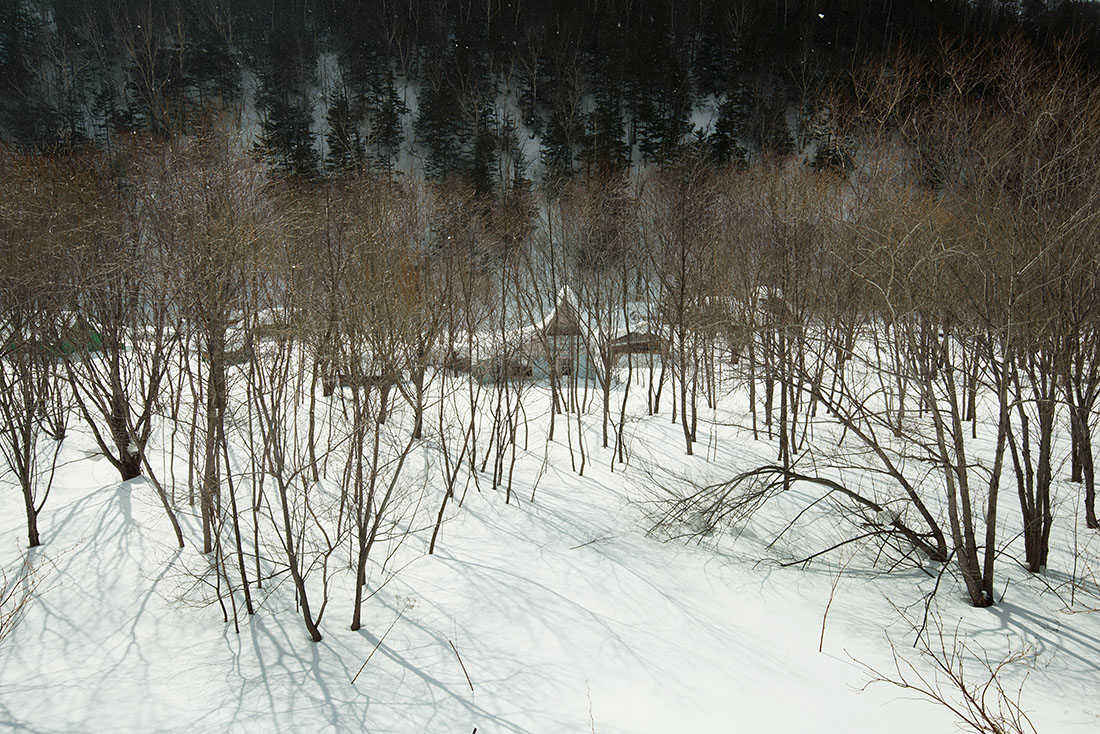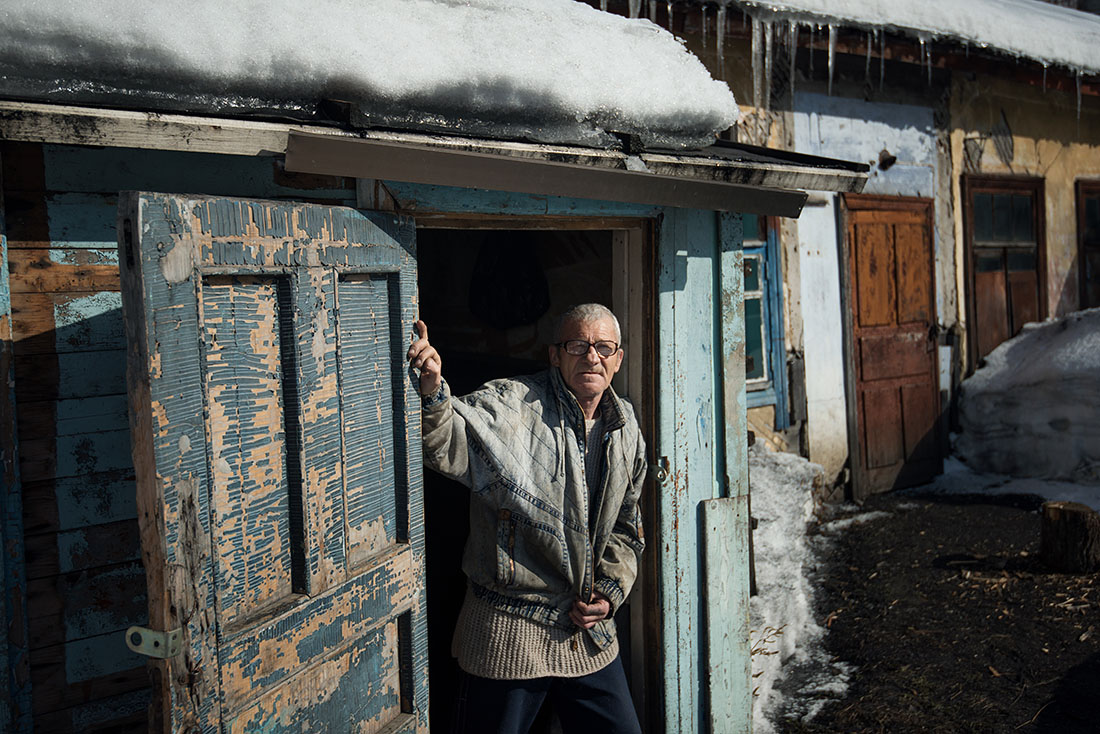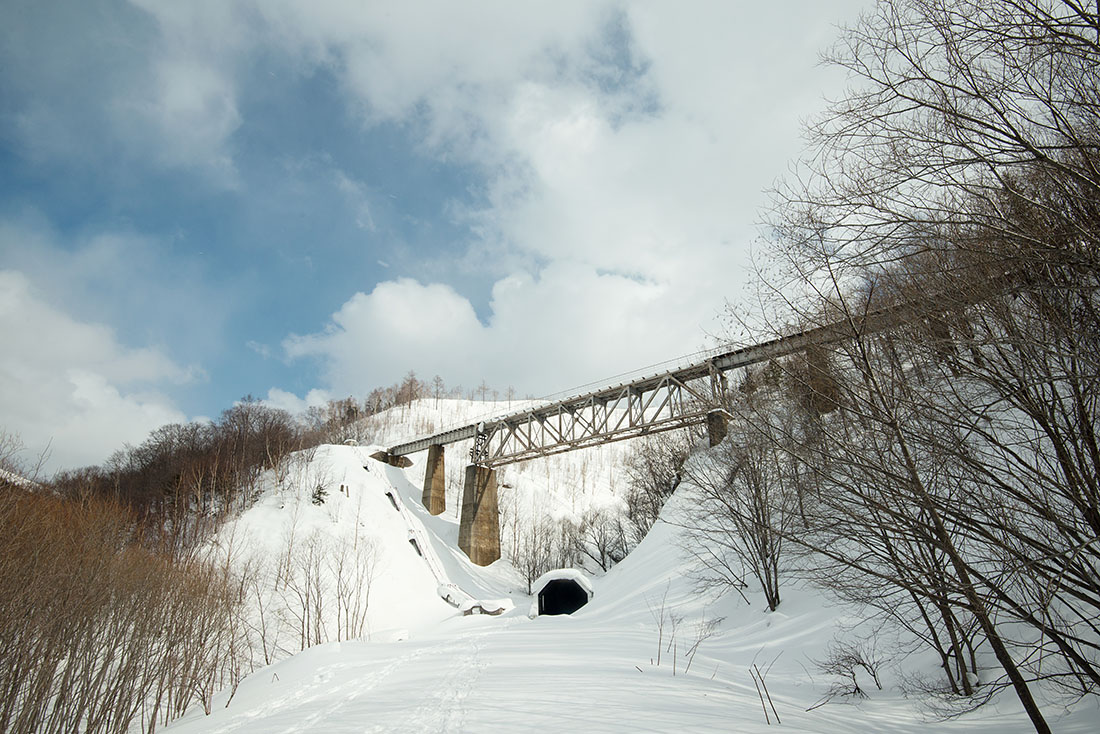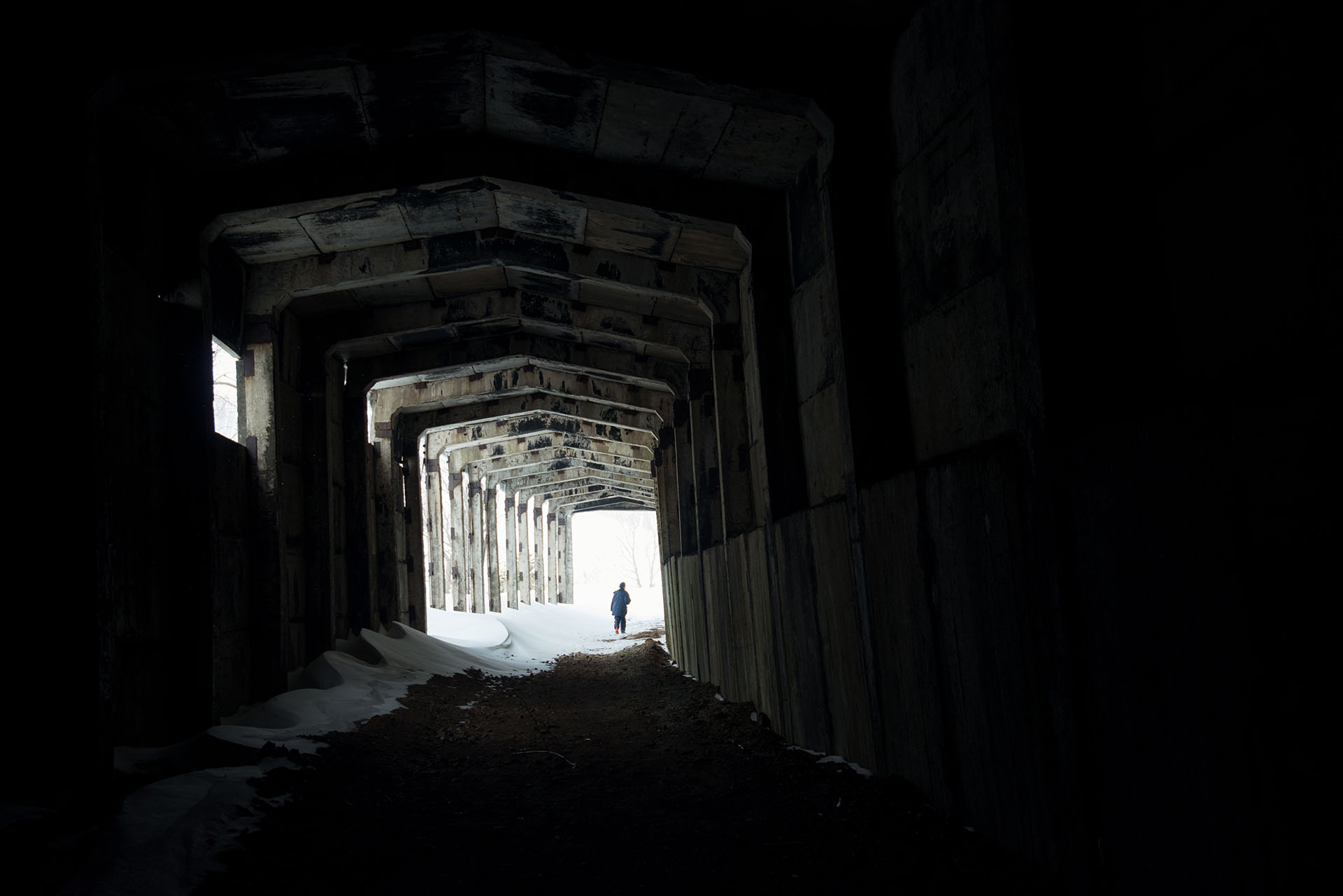Sakhalin Railway
for National Geographic Russia, 2015
Cold weather from the Pacific freezes the Sea of Okhotsk, which bathes the island in ice. In winter, the mercury drops to -48°C in certain areas, typhoons bury it under piles of snow in autumn, and thick fog envelops it in summer.
In the 19th century, however, the Russia of the tsars and the country of the Rising Sun disputed this inhospitable region anchored halfway between their empires. In 1905, at the end of the Russo-Japanese war, the 948 kilometer long island was finally divided between these two powers. The part north of the 50th parallel returned to the Russians, extending to the south to the Japanese. The following year, the latter began construction of a train line between Yuzhno-Sakhalinsk, the “capital”, and Korsakov, port of departure to Hokkaido, the northernmost island of the Japanese archipelago, barely 30 kilometers away.
Over the next few decades, they expanded their network through the massive employment of forced laborers deported from their colony in Korea. So much so that when the Soviets seized the entire island in 1945, they inherited 700 kilometers of track to Japanese standards, that is to say a gauge of 1.067 meters against 1.520 on the continent. The Russians did not extend them north of the 50th parallel until 1979, as far as Nogliki. The 300 kilometer crossing of the Strait of Tartary takes twelve hours. But on arrival, the axles of the embarked wagons must be changed to adapt them to the “Japanese gauge” of the rails on Sakhalin. Until 1994, the food was then transported by train to Yuzhno-Sakhalinsk through the mountains in the south of the island. This 30 kilometer section alone required the construction of bridges and tunnels with a cumulative length of 5,087 meters in the 1920s. Legend has it that for each of its rails laid a man found dead. This route was considered the most spectacular of all the Russian lines, but the dilapidation of its works of art made it more and more dangerous, and it was closed. From now on, to reach Yuzhno-Sakhalinsk from Kholmsk, freight and travelers are forced to detour via Ilyinskoye, located 178 kilometers further north.The 613 kilometer journey between the “capital” and Nogliki takes 14 h 37 min… when all is well! Because you have to reckon with snowfall (up to 2 meters in one day!), frequent avalanches, and sometimes even accidents. In November 2014, two passenger cars lifted by gusts of wind derailed between Chekhov and Kholmsk. Result of this disaster: one dead and seventeen injured.
Despite these hazards, this rail network could soon find a second wind. In 2008, Russian President Dmitry Medvedev announced a future connection between Nogliki and Komsomolsk-on-Amur, a stage of the BAM on the continent. This project involves the creation of a new line of 580 kilometers, and that of a tunnel or a bridge 12 kilometers long to cross the Strait of Tartary at this point. But also bringing the island network up to Russian standards. The widening of its tracks is underway, and should be completed in 2020.



